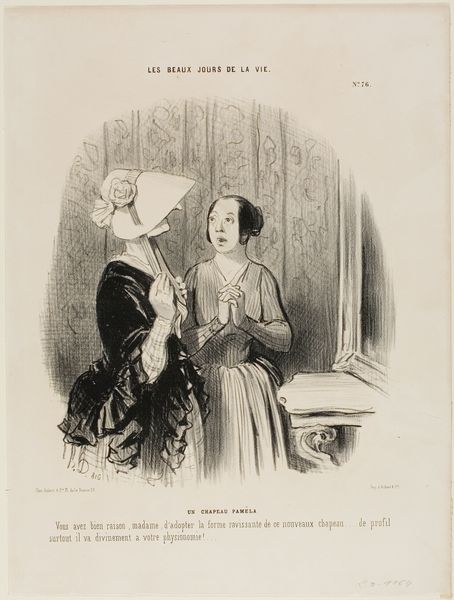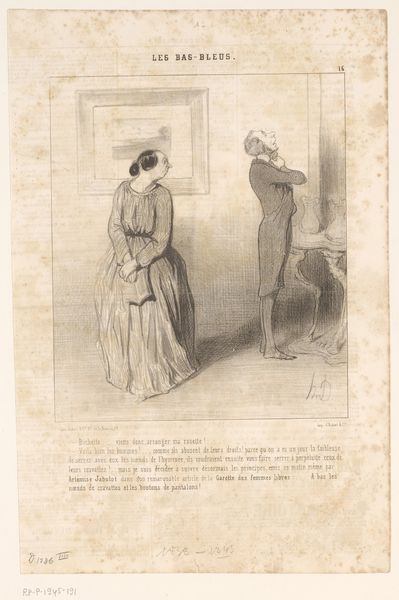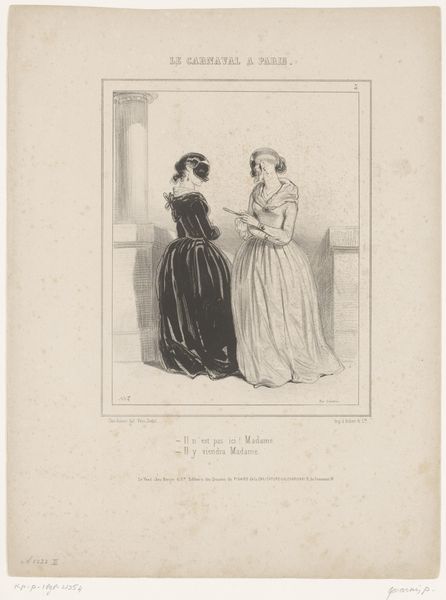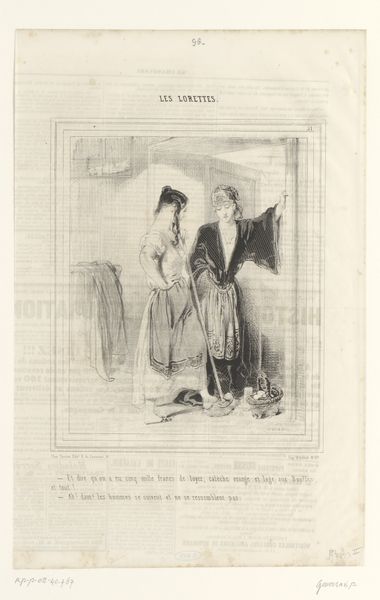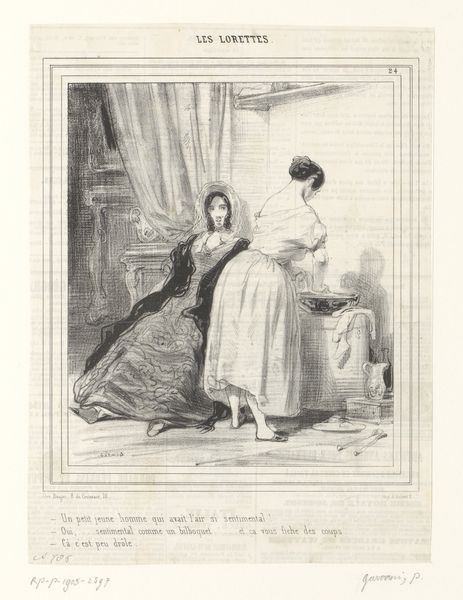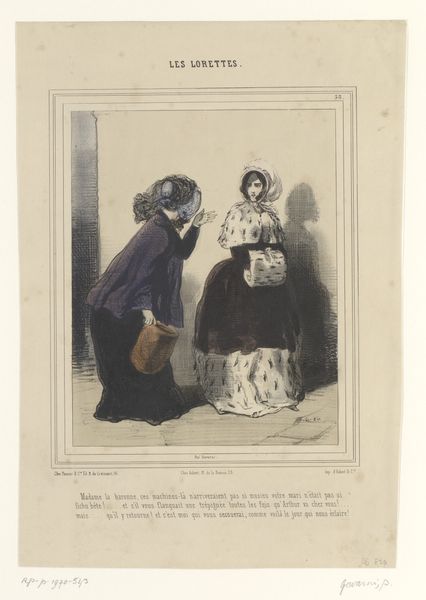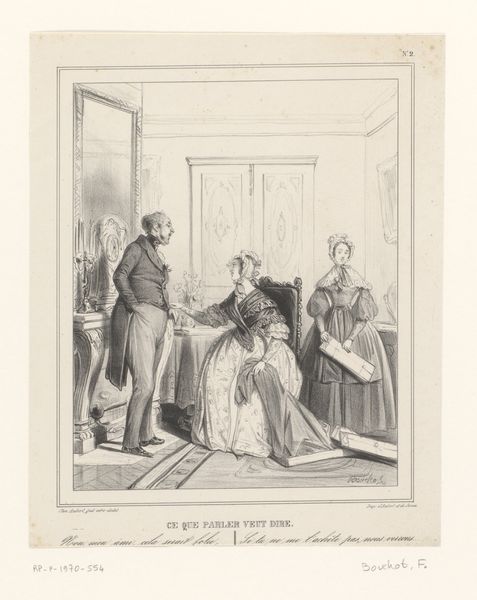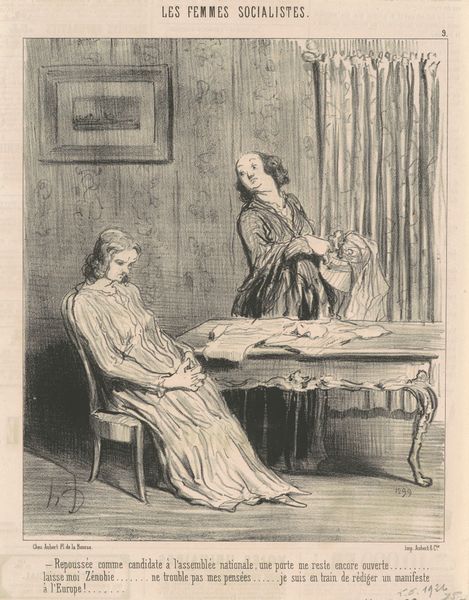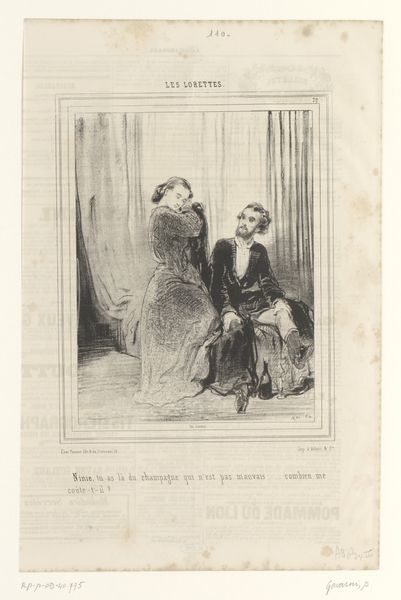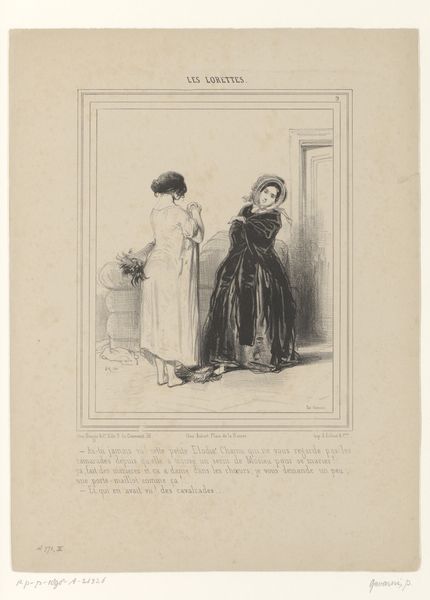
drawing, lithograph, print, graphite
#
portrait
#
drawing
#
lithograph
# print
#
caricature
#
pencil sketch
#
old engraving style
#
figuration
#
pencil drawing
#
romanticism
#
19th century
#
line
#
graphite
#
genre-painting
Dimensions: height 323 mm, width 243 mm
Copyright: Rijks Museum: Open Domain
Editor: Here we have Honoré Daumier’s 1845 lithograph, "Verkoopster prijst hoed aan bij een klant," or, "Saleswoman Praising a Hat to a Customer." The detail in the clothing is remarkable, especially given the medium. How does Daumier's choice of lithography influence your reading of this piece? Curator: Lithography was a key method for mass-producing images, bringing art to a wider, less wealthy audience. In this print, the quick, reproducible line mirrors the accelerating pace of consumer culture in 19th-century Paris. Editor: So, the printmaking technique itself becomes part of the artwork’s statement on consumerism? Curator: Exactly! Consider the materiality: Daumier uses readily available materials to depict a scene of aspiration. The lithographic stone, the ink, the paper - they are all components in a larger system of production and consumption. He's showing us not just a transaction, but the mechanics behind it, a rapidly evolving cycle fueled by desires and made accessible by industrial advancements in printing. Do you see a parallel with today's art practices using digital reproduction techniques? Editor: I hadn't thought of that, but it makes perfect sense! I was initially drawn to the interaction between the women, but the means of production gives it a whole other layer. Curator: Yes, and the choice of caricature itself. It’s a readily accessible and humorous medium for critiquing the social habits emerging with the rise of consumerism. Editor: It’s fascinating to think about how the artwork's materials and method tie into its subject matter. I definitely have a deeper appreciation for Daumier's commentary now. Curator: Absolutely, viewing art through the lens of material and production opens up many exciting avenues of interpretation.
Comments
No comments
Be the first to comment and join the conversation on the ultimate creative platform.
